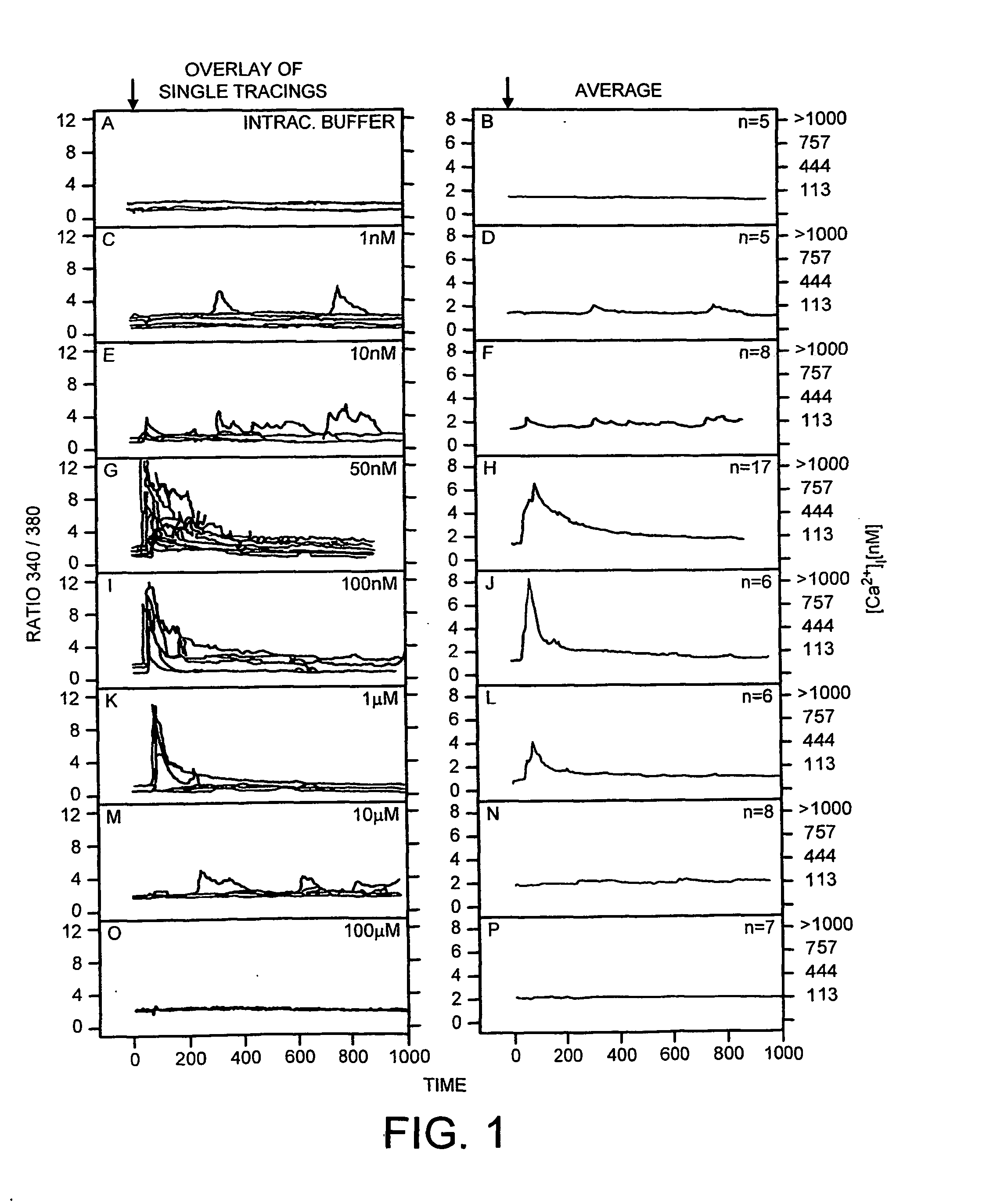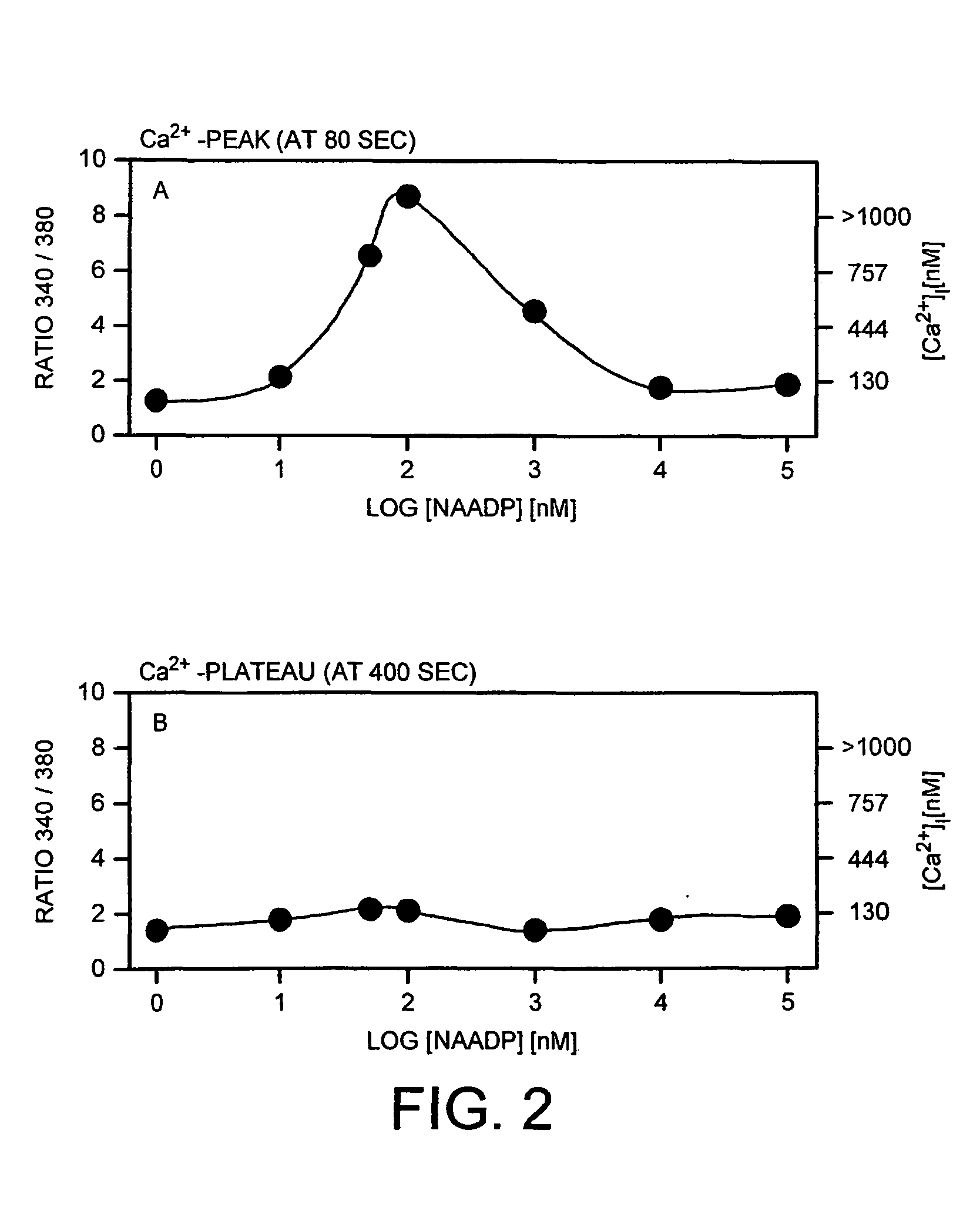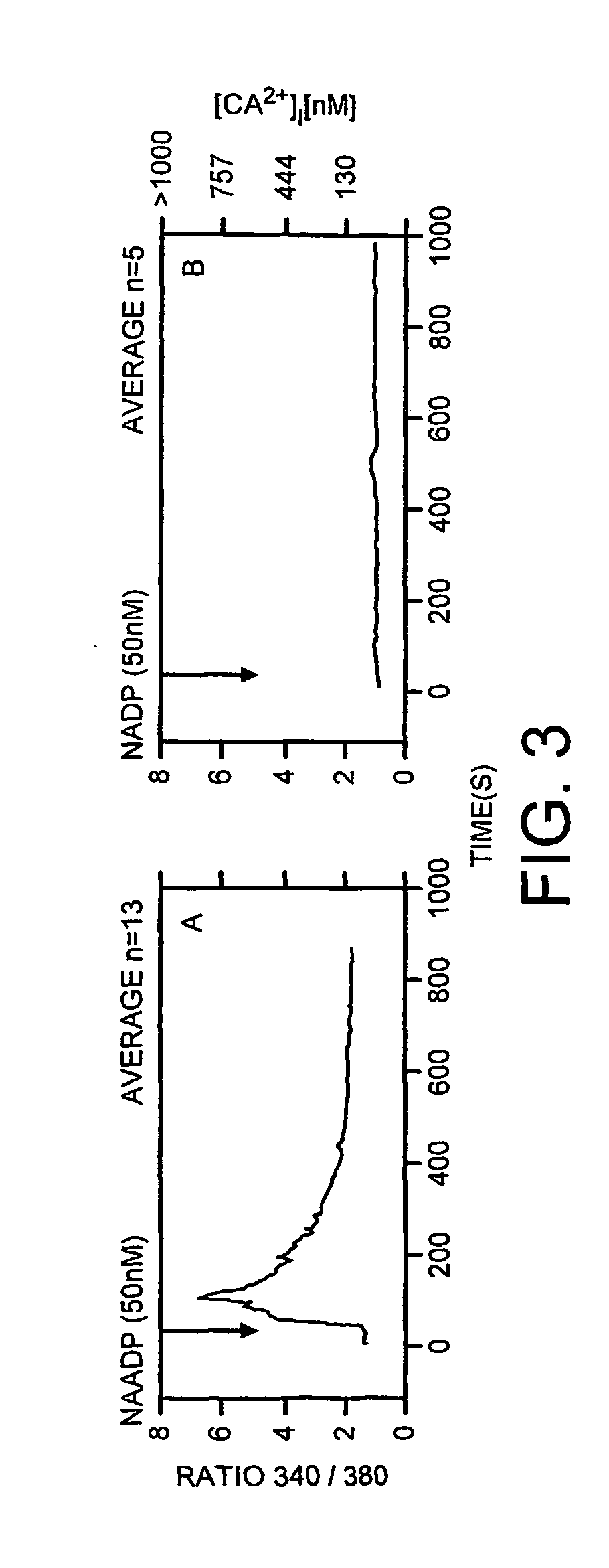Naadp analogues for modulating t-cell activity
- Summary
- Abstract
- Description
- Claims
- Application Information
AI Technical Summary
Benefits of technology
Problems solved by technology
Method used
Image
Examples
example 1
NAADP+ Activates Ca2+ Signaling at Low Concentrations in a Dose-Dependent Manner, but High Concentrations Causes Self-Inactivation of the Ca2+-Release System
[0174] Microinjection of NAADP+ at a pipette concentration as low as 10 nM stimulated repetitive, longlasting Ca2+ spiking of low amplitude in intact Jurkat T cells whereas injection of intracellular buffer alone had no effect (FIG. 1A,B,E,F). Microinjection of 0.1 or 1 nM NAADP+ was without effect in most of the cells (FIG. 1C,D, and data not shown). At a pipette concentration of 50 nM NAADP+ an initial, rapidly occurring Ca2+-peak with a high amplitude was observed which turned into gradually lowering oscillations during the first 350 to 400 s. After this time period the calcium response changed into a low, but sustained plateau phase with very small oscillations (FIG. 1G,H). At pipette concentrations of 100 nM and 1 μM similar responses were observed (FIG. 1 I to L). However, the peak amplitude of the initial Ca2+-spike decl...
example 2
The effect of NAADP+ on Intracellular Ca2+-Signaling in T Cells is Specific
[0177] To prove the specificity of the effect of NAADP+on intracellular Ca2+-signaling in T cells, NADP+ was used in parallel microinjection experiments. NADP+ is a structurally very similar molecule bearing a nicotinamide group instead of the nicotinic acid group. In contrast to NAADP+, microinjection of NADP+ (50 nM) was completely without effect on Ca2+-signaling (FIG. 3A,B).
example 3
Investigating the Relationship between the NAADP+ System and the Ins(1,4,5)P3 and cADPR Systems
[0178] The Ca2+-release system which is targeted by NAADP+ has not yet been identified, but work in other cell systems indicates that neither the InsP3-R nor the RyR are involved (Lee & Aarhus, 1995; Chini et al., 1995). However, both these classical intracellular Ca2+-release systems have been demonstrated to be essential parts of the Ca2+-signaling machinery of T cells (Jayaraman et al., 1995; Guse et al., 1999). Thus, the next series of experiments were designed to investigate potential interrelations between the NAADP+ system on the one hand and both the Ins(1,4,5)P3 and cADPR systems on the other hand.
[0179] The specific cADPR antagonist 8-OCH3-cADPR (Guse et al., 1999), when co-injected with an optimal NAADP+ concentration, did not significantly affect NAADP+-mediated Ca2+-signaling (FIG. 4 A,F vs. B,G). However, when a self-desensitizing concentration of NAADP+ (10 μM) was co-inje...
PUM
| Property | Measurement | Unit |
|---|---|---|
| Concentration | aaaaa | aaaaa |
| Immunogenicity | aaaaa | aaaaa |
| Level | aaaaa | aaaaa |
Abstract
Description
Claims
Application Information
 Login to View More
Login to View More - R&D
- Intellectual Property
- Life Sciences
- Materials
- Tech Scout
- Unparalleled Data Quality
- Higher Quality Content
- 60% Fewer Hallucinations
Browse by: Latest US Patents, China's latest patents, Technical Efficacy Thesaurus, Application Domain, Technology Topic, Popular Technical Reports.
© 2025 PatSnap. All rights reserved.Legal|Privacy policy|Modern Slavery Act Transparency Statement|Sitemap|About US| Contact US: help@patsnap.com



